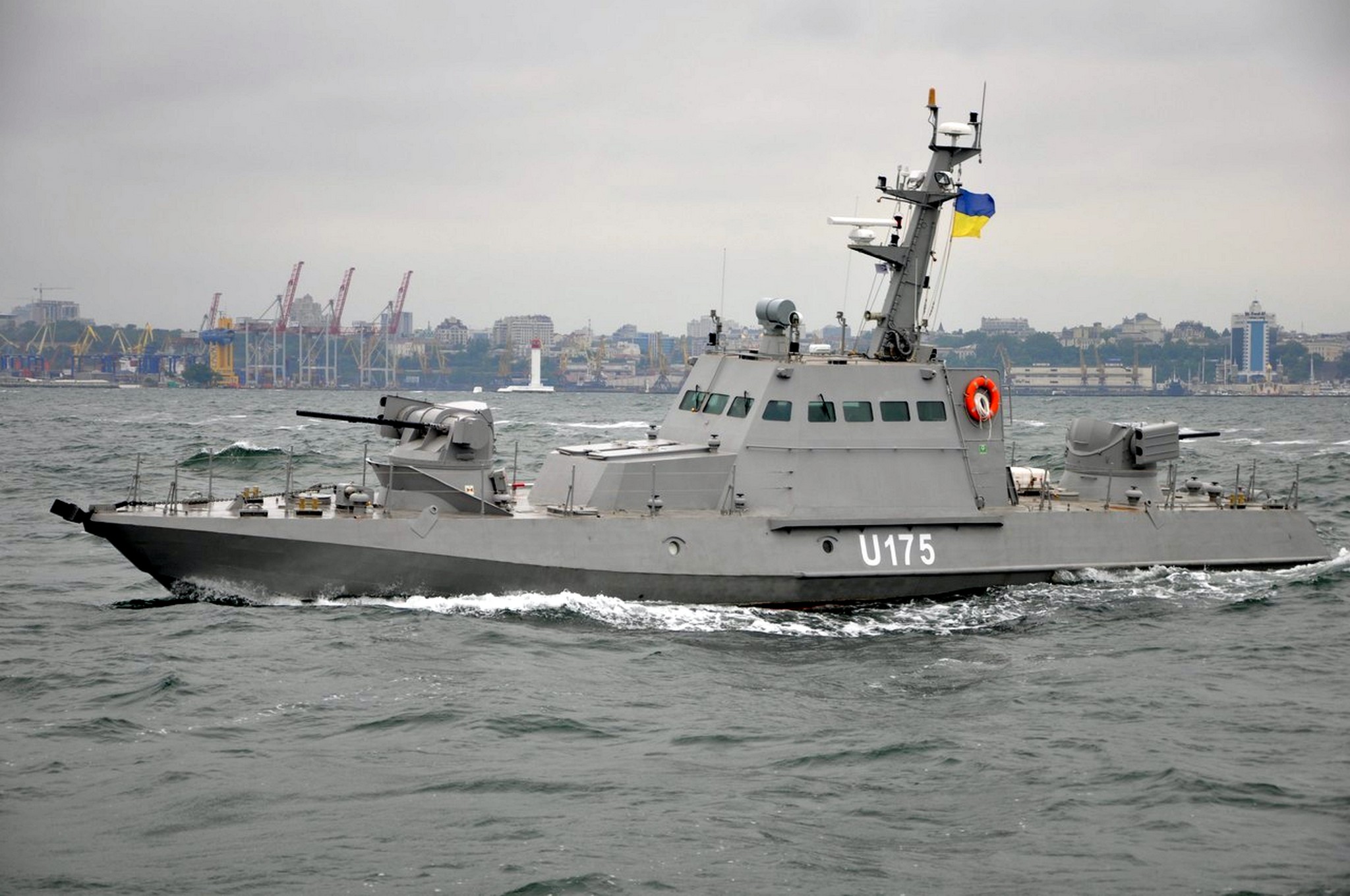A nation must think before it acts.
On November 25, Russian border service patrol boats opened fire on two Ukrainian navy gunboats and rammed a Ukrainian tugboat as they attempted to transit through the Kerch Strait from the Black Sea into the Sea of Azov, a body of water sandwiched between Russia, Ukraine, and the disputed territory of Crimea. Russian President Vladimir Putin was quick to explain that Russian border guards fired on the Ukrainian vessels after they illegally entered Russia’s territorial waters and ignored orders to stop. Six Ukrainian sailors were wounded. Ultimately, Russia seized all three boats and captured two dozen Ukrainian sailors. At this writing, those sailors remain in detention after being moved to Moscow. While Russian and Ukrainian forces have faced off before, the incident marked the first time they openly clashed.
Russia Flexes Its Muscle in the Sea of Azov
The incident, however, did not come out of the blue. Tensions had been building for some time. A week earlier, Russia seized a Ukrainian fishing boat in the Sea of Azov. In September, Ukraine successfully sailed two naval auxiliaries through the Kerch Strait, most likely to reaffirm its right to free navigation through the waterway and gauge Russia’s reaction. Why Ukraine felt like it needed to do so was driven by Russia’s increasingly aggressive interdiction of maritime traffic through the area. In August, that interdiction drew a rebuke from the U.S. Department of State, which condemned “Russia’s harassment of international shipping in the Sea of Azov and the Kerch Strait. Russia has delayed hundreds of commercial vessels since April and in recent weeks has stopped at least 16 commercial ships attempting to reach Ukrainian ports.”
From Russia’s perspective, it has simply been enforcing its sovereignty claim over the Sea of Azov. Russia has long considered it as an inland sea, based on a 2003 agreement between Russia and Ukraine that divided the sea between them. Thus, Moscow has argued, international maritime law does not apply there. After its annexation of Crimea in 2014, Russia enlarged its maritime claim to include those waters adjacent to the disputed territory, which prior to the annexation would have fallen under Ukrainian jurisdiction.
Naturally, Ukraine has disputed not only Russia’s annexation of Crimea, but also its expanded maritime claim, which now encompasses a large swath of the Sea of Azov and its outlet into the Black Sea through the Kerch Strait. Ukraine argues that Russia’s claim is groundless, given that their 2003 agreement failed to specifically define the boundaries of the sea in the first place, leaving the matter vague.
Since 2003, Russia and Ukraine made little headway in clarifying their agreement, as the two countries repeatedly found themselves at loggerheads over a host of other issues, from Ukrainian natural gas payment to Russian support for separatists in southeastern Ukraine. Left unsettled, the Sea of Azov has remained a potential flashpoint between the two antagonistic neighbors.
Escalating Tensions
Strengthening its ability to control the Sea of Azov, the Russian navy transferred three missile boats and two auxiliaries there from the Caspian Sea in May. In the same month, Russia completed the first of a dual-span bridge across the 15-kilometer-wide Kerch Strait that directly connects Russia with Crimea. Ukraine has regarded both actions as provocative, as they help Russia to consolidate its power in Crimea.
In response, Ukraine renewed its effort to beef up its navy. It sped up plans to build a fleet of small gunboats that could challenge Russian naval forces by taking advantage of the region’s littoral waters. To that end, Ukraine revealed that the United States would provide it with two retired Island-class coast guard cutters in April. Both were formally transferred to Ukraine by September and will receive upgrades before being shipped to Ukraine in 2019. Perhaps, if all the vessels in its future “mosquito fleet” were armed with anti-ship missiles, they could give even larger Russian warships pause. But without aerial cover, they are unlikely to fare much better than the two gunboats the Ukrainian navy lost in the latest incident—one in which Russian maritime forces were supported by two Ka-52 helicopters and two Su-25 ground attack aircraft.
Strategically, Russian dominance over the Sea of Azov would close off southeastern Ukraine from international shipping lanes and open it up to the possibility of an amphibious assault, a practical concern given the nearby Russian Black Sea Fleet’s modest amphibious-lift capacity. Certainly, both complicate Ukraine’s task of holding onto its southeastern territories from pro-Russian separatists. And, in the latter case, defending its long coastline on the Sea of Azov would stretch Ukraine’s already thinly spread military forces.
Of course, Ukraine’s most straightforward defense against a threat from the sea would be to employ a combination of attack helicopters (which can quickly reach a landing site and effectively engage a wide range of targets) and fighter aircraft (which can provide air cover for the helicopters). Unfortunately for Ukraine, its air force is small in comparison to Russia’s and was made smaller still after Russia captured many of Ukraine’s MiG-29 fighters during its occupation of Crimea. Moreover, three days after the incident in the Kerch Strait, Russia announced it would bolster its air defenses on Crimea with the deployment of a fourth S-400 surface-to-air missile battalion. The S-400 is Russia’s best long-range anti-aircraft system.
In the near term, it is hard to see how Ukraine can improve its strategic situation, given the West’s reluctance to provide it with lethal aid. But Russian actions have not completely avoided Western reaction. In October, the European Parliament passed a resolution, albeit a non-binding one, to toughen economic sanctions against Russia over its hindrance of free navigation in the Sea of Azov and construction of the Kerch Strait bridge. Hence, one might expect the West to impose more economic sanctions against Russia over the recent naval scuffle. But whether they will alter Russian behavior is dubious, considering the result of earlier economic sanctions against Russia. Meanwhile, the incident and subsequent rise in tensions have made many who live in southeastern Ukraine feel like a Russian noose is slowly tightening around them.




